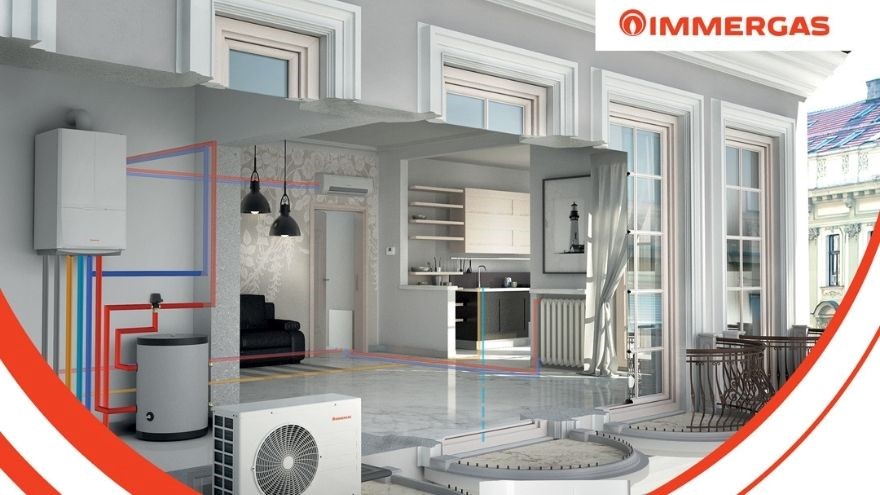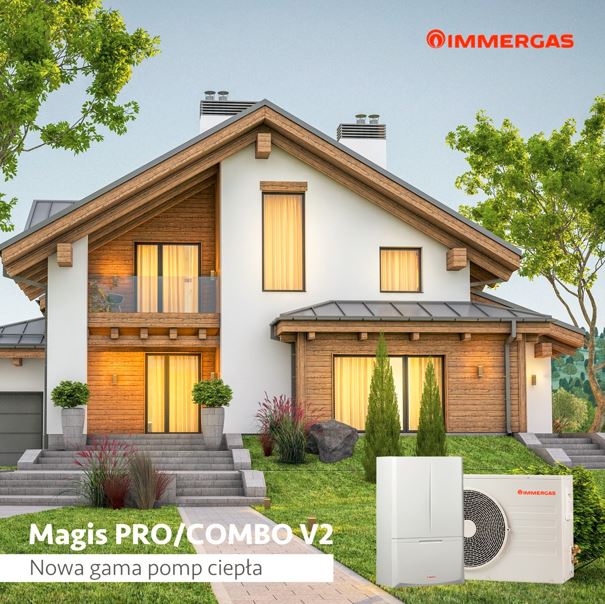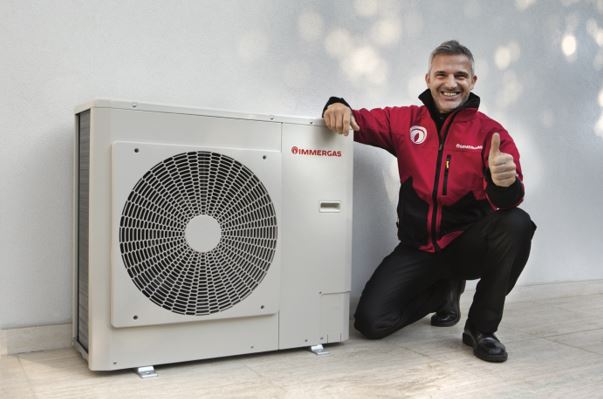Heat pumps are becoming more and more popular among Poles. Their growing popularity is primarily due to economic reasons. Systems of this type allow you to save a lot, and in combination with the even more frequently used photovoltaic installations, they guarantee essentially free thermal energy. If you work with the installation of heat pumps, be sure to read our guide on them!

From this article you will learn:
- what type of heat pump to choose,
- how to match its power to the building's needs,
- where is the best place to install a heat pump,
- what products to pay attention to when choosing a heat pump
Heat pump - which type to choose?
Heat pumps are modern devices used for heating buildings and preparing hot water. Their most important advantage is the fact that they obtain the energy necessary for operation from renewable sources, i.e. water, air and ground. Only about 20% of the required energy comes from the electrical installation, which must power the pump compressor. Hence the trend of combining this system with the above-mentioned photovoltaics.
As an installer, you are most often responsible for selecting the right pump for the building. You will make the decision based on your technical knowledge and information obtained about a given facility. First of all, you must take into account the purpose of the device. Find out whether it is intended only to heat the house, or also to prepare domestic hot water or cool the building in the summer. It will also be important whether the pump will function independently or only support the operation of the boiler
The main division of heat pumps includes:
- Water heat pumps - intended for buildings located on properties that have access to an appropriate source of surface or underground water. In practice, they are chosen quite rarely.
- Ground heat pumps - available in variants with a horizontal and vertical exchanger. The former is suitable only for large plots, while the latter involves significant expenses for the investor.
- Air heat pumps - are intended for facilities with low demand for heat and domestic hot water, as well as to support the operation of the boiler.
You can treat the above classification as a starting point for choosing the right heat pump.
Check out heat pumps at the Onninen wholesaler
How to select the heat pump's power to match the installation's needs?
 To properly select a heat pump to meet the needs of your home, you should take into account not only general assumptions, but also specific technical parameters.
To properly select a heat pump to meet the needs of your home, you should take into account not only general assumptions, but also specific technical parameters.
One of the first criteria taken into account is the COP coefficient. This is a value provided by the manufacturer based on tests of the heat pump in specific, defined conditions. As you might guess, your device may behave completely differently outside of this environment. The COP coefficient depends, among other things, on the external temperature or the installation supply temperature. Therefore, this is not particularly reliable information.
When choosing a heat pump, you should undoubtedly take into account the size of the house. It largely determines its demand for thermal energy. However, it is important to remember to also take into account heat energy losses in the building when making these calculations. To determine the required pump parameters, information about the insulation of the facility and its joinery will be necessary. The location of the house will also be important.
Knowing the facility's heat demand, the heating power Pg of the pump can be selected. This parameter determines the amount of energy with which the device's compressor supplies heat to the installation. If the value is too small, the building will be underheated. However, if you select a pump with too high a heating power, it will result in excessive and uneconomical power consumption.
There are two schools of thought when selecting the heating power of a heat pump. The first assumes covering the maximum heat demand , thanks to which the device will effectively heat the building even at the lowest external temperatures (assumed to be -20 degrees Celsius). However, at higher temperatures, the heat pump will consume more energy. The second option is to adjust the heating power to approximately 70% of the maximum demand . This variant requires the use of additional devices in the form of an integrated heater or a fireplace. However, it is worth investing in them, because this type of solution guarantees optimal operating costs of the heat pump.
Exchange benefits in the new OnnTop loyalty platform!
Heat pump - installation in a few simple steps
Installation of a split heat pump includes several key stages, the correct implementation of which determines the efficiency of the entire system. First, select the appropriate installation location for the outdoor pump unit, then assemble the indoor unit, and finally connect them together.

When deciding on the location of the external heat pump unit, remember that it should be no closer than 30 cm from the building wall. This will ensure free air flow through the device. At the same time, this distance cannot be more than 4 - 6 m, because the factory quantity of refrigerant is usually sufficient. Even if it is tapped, the length of the pipeline should not exceed 12 - 15 m.
The outdoor unit can be mounted on a concrete plinth or on a system structure. Make sure that its height from the ground level is not less than 40 cm, as heavy snowfall could block its fans. Relatively light, low-power heat pumps are also suitable for mounting on a building wall. However, remember not to install outdoor units above utility surfaces such as sidewalks or stairs due to condensate flowing down.
Immergas heat pumps in the wholesale offer!
The unit is installed inside the building in a place with easy access. This will ensure the convenience of possible service work and operation of the controller. An appropriate power cable must be connected to the heat pump - depending on the type: single-phase or three-phase. Also remember about proper electrical protection of the unit.
The final stage of installing a split heat pump is connecting the indoor unit to the outdoor unit. This is done using refrigeration connections of appropriate diameters. Before you fill them with gas, you must perform a leak test, which uses nitrogen under high pressure. The rehearsal should last at least 40 minutes. If successful, you can clean the system, fill it with refrigerant and start the connection between both heat pump units.
Heat pumps in the Onninen offer
High-quality Immergas heat pumps are waiting for you in the offer of our online wholesaler. Here you will find, among others, split models and variants equipped with a domestic hot water tank. Choose the device according to your customer's needs and provide him with an economical and effective home heating system!
Do you have questions about the industry? Join the Świat Instalacji group!